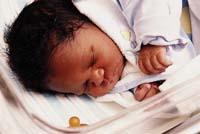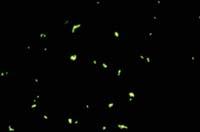Married to microorganisms during life

Those who say that man is a multiorganism do not go very wrong. Imagine that for every gram of human body we have 1014 microorganisms, the majority in the intestine. This allows the digestion of various foods and the strengthening of the immune system, among others. Given its importance, research on the microbiota of the human body is fashionable.
At Stanford University, for example, a follow-up of the intestinal flora of newborn children has been done. As they have explained, even after a year can be seen the trace of microorganisms that invaded the baby's intestines immediately after their birth. Specifically, 14 newborns have followed the intestinal microbiome for one year. Microorganisms have been identified from the feces of these children and have been compared with those of maternal, vaginal, and breast skin.
After one year, children had microbial populations similar to those of adults in the intestine, but each had some peculiarity. According to the researchers, this peculiarity depends on the first contact with microorganisms.
However, the story of each child has a lot to say on this subject. It is not the same, for example, birth by normal childbirth or cesarean section, breastfeeding or other milk with a bottle… and also influences the fact that the child has received antibiotics and that before or after he has begun to eat solid foods.
Some microorganisms increase obesity

In short, they want to know how the diet and genetics affect the microorganisms of the human body. And in that sense, another study has included archaeologist Methanobrevibacter smithii at the University of Washington. In fact, they have seen that this microorganism helps to get more calories from food.
M. smithii is known for its influence on the intestine, releasing methane. This microorganism (and its members) feeds on the remains of other intestinal organisms, so that they continue to work and help digest foods that could otherwise continue to progress in the intestine. Research has been carried out with mice, but extrapolating the conclusion to the human being, researchers believe that eating the same meal, two people will receive different calories depending on the amount of M. smithii they have in the intestine.
Finally, another research group has worked on sequencing the genome of the intestinal microbiome. The objective is to study intestinal microorganisms as an ecosystem and, among other things, have seen that the archaeologist M. smithii is very abundant.





